Dolls: Nesting & Re-Nesting
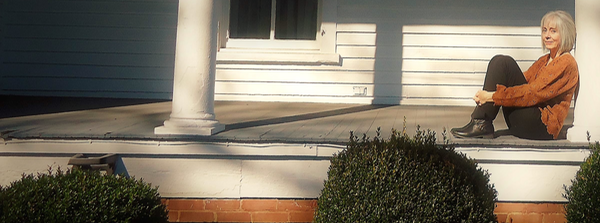
“Truly, my mother was a hard, hard act to follow. Her black chignon, her enormous hats, her flawless, Charles-of-the-Ritz make-up, her back-seamed stockings, their seams razor-straight, her high, high-heeled pumps, her three (never more) pieces of good jewelry . . . . And then, there was her daughter, who would not sit still, and whose hair—and I suppose the curls came down to me from the Ellenburgs—was uncombable. When I arrived, late in my mother’s marriage, first, I stole her waistline and, then, I grew into a child of skinned and bandaged knees, nothing like the doll I believe she had expected and whom she had hoped would mirror her.”—Elizabeth Boleman-Herring
Weekly Hubris
By Elizabeth Boleman-Herring
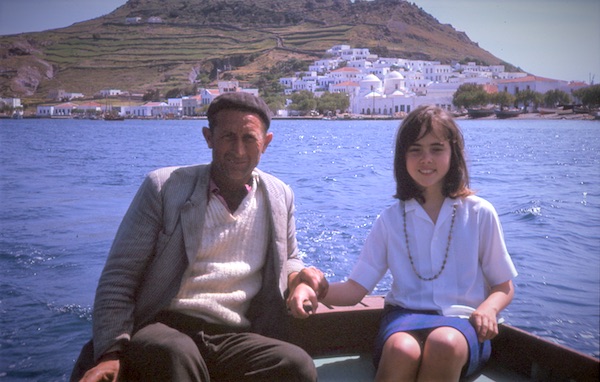
“Donald Woods Winnicott introduced the concepts of ‘transitional objects’ and ‘transitional experience’ in reference to a particular developmental sequence. With ‘transition,’ Winnicott means an intermediate developmental phase between the psychic and external reality. In this ‘transitional space’ we can find the ‘transitional object.’ When the young child begins to separate the ‘me’ from the ‘not-me’ and evolves from complete dependence to a stage of relative independence, it uses transitional objects. … In a later stage of the development the child no longer needs the transitional object. It is able to make a distinction between ‘me’ and ‘not-me,’ and keeping inside and outside apart and yet interrelated. This development leads to the use of illusion, symbols, and objects later on in life. Winnicott related the concept of transitional object to a more general one, transitional phenomena, which he considered to be the basis of science, religion, and all of culture. Transitional objects and phenomena, he said, are neither subjective nor objective but partake of both.”―from “Comfort Object,” Wikipedia
“By having a reality of its own, the toy helps the child learn to cope with the experience of an abandoned possession. At root, the object is used as a defense against depressive anxiety around separation from the mother, and, by the not-me experience, the child can accept similarity and difference through the use of symbols. As children gain confidence in forming new attachments through creative play with others, they learn to share their toys.”―Ya’ir Klein, Retired clinical psychologist and adult psychotherapist, London
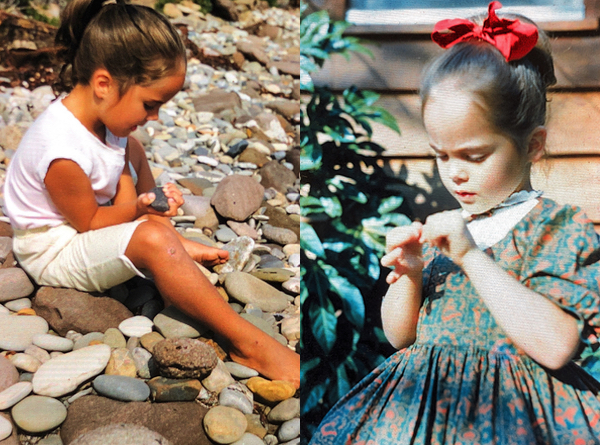
I. Me & Not Me
PENDLETON South Carolina—(Weekly Hubris)—June 1, 2021—My parents were married, happily, for 13 years before I was born, in Winston-Salem, North Carolina, in 1951. Shortly after my birth, my father accepted a position as the Executive Director of the Five Acres Children’s Home in Los Angeles, California, and I can remember no other early home than on Crestford Drive.
Growing up there in the 1950s, I lived largely outdoors in the Arcadian perfection of southern California, one of a tribe of children as diverse as living almost anywhere in the country at that time. My family traveled, during school holidays, to Mexico, and camped extensively in the Northwest, and Canadian wilderness. I walked and swam and studied fauna in the tidepools of Ventura Beach, where, alone with my father much of the time, I had no playmates.
My life indoors was even more solitary; I would be an only child. But I remember, like all children, constructing houses and cities and worlds out of boxes and chairs and sheets, and playing, primarily with tiny animal figurines, which I still have, packed away in a trunk.
In Pasadena, until the age of five, I am caught in Kodachrome slides, out of doors, shirtless (like my father before me, in Florida). Then, except at school, I wore shorts, and “pedal pushers,” and Levi’s (which existed, for camping, back in the late 1940s and 50s, but which were not then ubiquitous): the pair I have held on to for half a century zip up the side and have snaps covered in mother of pearl.
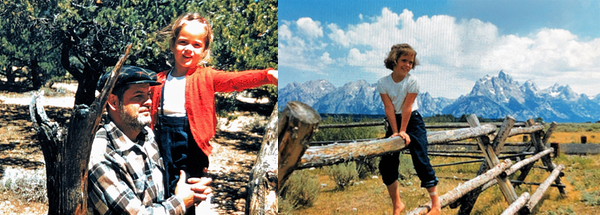
In California, little girls were dressed like little boys back then, until time for school and church. Then, for me, came uniforms: pleated, grey wool skirts, white blouses, and navy blazers in winter; and, in warm weather, hideous pastel shirtwaists emblazoned with the Town & Country Day School or Westridge crests. For church, Pasadena Presbyterian, there were despised, scratchy, more formal dresses, with multiple petticoats; patent-leather Mary Janes; white, lace-trimmed socks; and hats with flowers or cherries. White gloves. Tiny patent-leather purses in which to carry a handkerchief and an envelope for the collection plate.
I remember my childhood clothes, item by item. There were, by comparison with children’s wardrobes today, very few of them, and they were made to last. Some of my clothing was sewn by my grandmothers, who lived “back East” in South Carolina and Georgia. (One organdy pinafore, with my nickname, “Bebe,” embroidered in the front, and which I do not recall wearing, I have, still.) Most of it was purchased at the Bullocks Wilshire Department Store. The corduroy overalls and jumpers and blouses were heavily embroidered or smocked, which involved hours and hours of handiwork executed by strangers living elsewhere in the world. I can remember everything hanging in my closet, well above my own eye level, on child-sized plastic hangers. These hangers, which featured pastel duck and bunny faces, were a subject of interest for me.
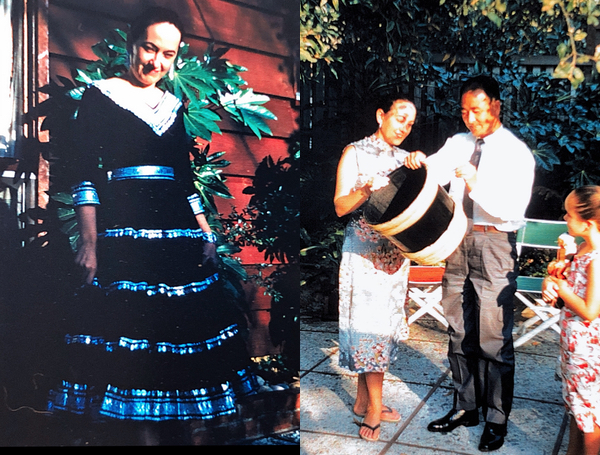
My mother, in her element in Los Angeles and Hollywood, after an early life in a rural South Carolina straitened by the Great Depression, blossomed into a woman of great style in the 1950s. She orchestrated our wardrobes in this era of Dior, Givenchy, Chanel, and Balenciaga, and I have managed to hold on to three or four of her dresses from this period, which made her a nipped-at-the-waist hourglass. One of us—my father; later, I—cinched her into her strapless, “merry widow” boustiers before she carefully slipped the dresses over her head.
Truly, my mother was a hard, hard act to follow. Her black chignon, her enormous hats, her flawless, Charles-of-the-Ritz make-up, her back-seamed stockings, their seams razor-straight, her high, high-heeled pumps, her three (never more) pieces of good jewelry . . . . And then, there was her daughter, who would not sit still, and whose hair—and I suppose the curls came down to me from the Ellenburgs—was uncombable.
My mother, the youngest of three daughters, and much, much younger than her older sisters, had never handled babies nor cared for toddlers. I was not a placid child, and came to hate the brush, comb, and camera. I hated, as well, constraint. Little girls of my mother’s generation were rarely seen and never heard, and all her early clothing was handed down. My father told me that when she married, at 19, he bought her her first-ever new dress.
In post-war mid-century America, spilled into California’s lap of plenty, image and presentation became important to my mother, so long starved of beauty and abundance. When I arrived, late in my mother’s marriage, first, I stole her waistline and, then, I grew into a child of skinned and bandaged knees, nothing like the doll I believe she had expected and whom she had hoped would mirror her.
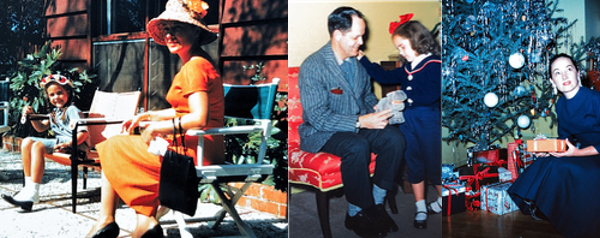
I screamed whenever she tried to untangle or braid my hair. Unruly, it rippled to my waist, and the 1950s were not a decade when little girls wore short hair. My father took over the brushing and braiding; my mother relentlessly worked at costuming and polishing and refining me. The results were mixed.
A child model—briefly—I once stood in the wings of a huge auditorium in a beautiful white organdy dress, a spray of red roses embroidered across one shoulder and down the front, and wailed, “There are too many people! Too many people!” The event had been rehearsed in an empty hall. On the day of the show, it was packed. I never made it onto the runway.
I wore an uncomfortable white sailor suit (modeling my mother’s all-things-Parisian-is-best approach to all-things-public-facing) to the sitting for my first passport photographs, just before we left for Greece in 1961. A healthy, if thin, nine-year-old, I would very shortly, in Europe, experience a series of metamorphoses as I entered adolescence, rapidly outgrowing the California clothing purchased in anticipation of our spending two or three years abroad.
There was really no way for my mother to plan for my serious illnesses in Europe; for a little girl’s body which first wasted and then burgeoned. In the Greece of 1961, 62 and 63, readymade children’s clothing and shoes were non-existent: my parents supplemented their own Spartan wardrobes in Athens and then Rome, my mother, with an Athenian seamstress, copying the new designs coming out of Paris. An Armenian antique dealer in The Plaka dipped ancient Greek coins of no real value in gold, and made buttons for my father’s best navy-blue blazer.
We lived on the salary of a Fulbright Professor; “on the economy,” as opposed to being cushioned by the post-exchange privileges of the American diplomats and military personnel stationed in the Greek capital. I attended elementary and middle school with the children of these colonels, majors, attachés, and envoys, who might as well have still been living in Reston or Rockville, for all the contact they had with Greece.
At the post exchange, my classmates’ parents bought sweatshirts, sneakers, and poodle socks along with their pasteurized milk, Coca-Cola, and Cheerios. I drank powdered milk boxed in northern Europe, until I refused to, and, when my California clothing no longer fit me, became a source of further frustration for my mother.
When we traveled, we took with us a well-worn copy of Frommer’s Europe of Five Dollars a Day. We lived on that budget, and my mother took notes in the margins about felicitous recommendations or, as in Paris, truly awful accommodation. Americans traveling in the early 60s had little to choose from in the realm of travel guides. Frommer’s paperback disintegrated on our watch, but I still have my mother’s original 1955 Hachette, 1961 Fodor (purchased at Vroman’s Pasadena), and 60-61 Fielding guides.
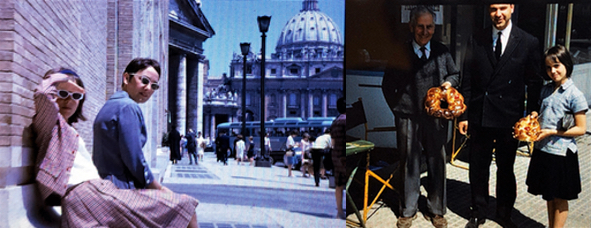
After that first summer, I began to look bedraggled. Neither an American nor, certainly, a Greek child, and attending the American Community School in Filothei, where conforming was of essence, as among all adolescents, I was perceived as a changeling. In a snapshot taken in the 7th Grade, I stand in a striped, pencil-thin skirt made by my mother’s seamstress out of wool woven on Mykonos by Vienoula Kousathana, and one of my mother’s side-buttoned, fringed, cashmere Givenchy sweaters. My shoes are terrible, beige, suede, Greek loafers. The other little girls in the photograph, daughters of colonels and majors, wear mass-produced American shirtwaists and Keds bought at the base PX. No Greek classmates appear beside me, but I recall their clothing comprising scaled-down versions of what their parents wore: formal, heavy, dark suits and skirts, and white shirts for both girls and boys: post-war Greece was sartorially grim.
My classmates, at 10 and 11, did not know what to make of me: I seemed not one thing or another, neither American nor Greek, and that was deemed suspect. Only my classmate Vicky Politi, the daughter of a Greek-American father, somehow straddled the same cultural line; inhabited a similar psychic space. I had close friends my age in Athens, but just as I had not mirrored my mother’s elegance, so I could not mirror little-American-schoolgirls-abroad, either. In Germany, our first year in Europe, I contracted amoebic dysentery, and might have been sent home to the US had the father of a friend not spirited milk out of the PX and brought it to our apartment, a serious breach of the norms binding him in those days.
I remember being most stunningly out of place and wearing the wrong clothes in Egypt that first winter. Dressed for “church in California,” in my black-velvet jumper, white blouse, Mary Janes, and white lace socks, half in and half out of my best tweed winter coat, I was pulled, unwillingly, onto the dance floor at a Cairene night club, where a very young belly dancer wearing practically nothing tried to lead me through her routine. My parents and the Ganse Littles, our Presbyterian minister and his wife, then visiting from Pasadena, were gamely laughing, as was I, but in almost every way, I was out of all my elements.
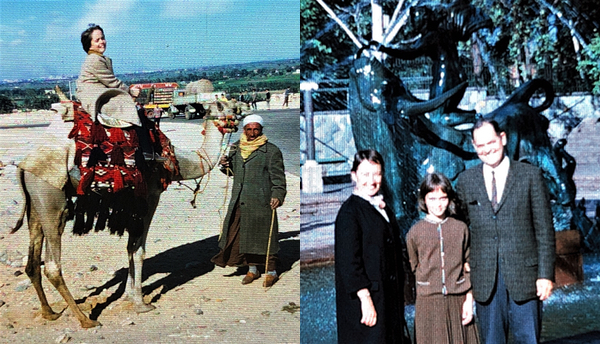
I have lived what I would term “a big life,” certainly, by any standards, but oh, God, with that bigness, with that richness, has come much turmoil. At the hinges of my life, in the times of transition and upheaval, I have experienced vertiginous anxiety. My parents, upwardly and socially and culturally mobile, preternaturally graceful, lived at just the right moment—for both—in history: they found, and created, just the right conditions for blossoming, as individuals and as partners to one another. They were in synch with the mid-20th-century, riding, as though on a wave of style and substance.
Constrained in my snow-white sailor suit, and, then, in Europe, in my mismatched, rapidly outgrown and higgledy-piggledy adolescent wardrobe, I gazed down at feet suddenly too large for the Bernardo sandals bought back at Bullocks, and wondered if I would ever, ever become a swan like my mother. I thought, back then, that I wanted to become a swan.
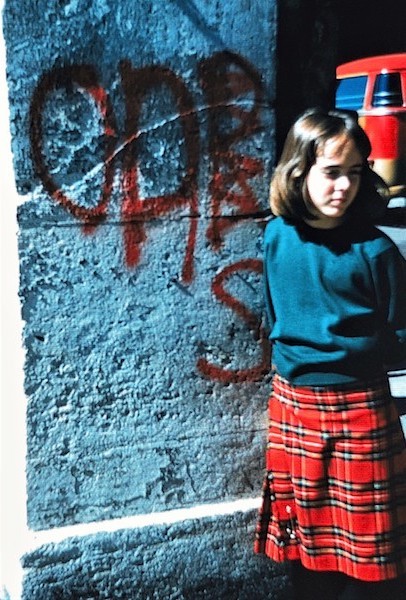
![]()
II. Subjective Impotence
“Infants see themselves and the mother as a whole. In this phase the mother ‘brings the world’ to the infant without delay which gives it a ‘moment of illusion,’ a belief that its own wish creates the object of its desire which brings with it a sense of satisfaction. Winnicott calls this subjective omnipotence. Alongside the subjective omnipotence of a child lies an objective reality, which constitutes the child’s awareness of separateness between itself and desired objects. While the subjective omnipotence experience is one in which the child feels that its desires create satisfaction, the objective reality experience is one in which the child independently seeks out objects of desire. … Later on, the child comes to realize that the mother is a separate entity, which tells the child that they have lost something. The child realizes that they are dependent on others, thus losing the idea that they are independent. This realization creates a difficult period and brings frustration and anxiety with it. The mother cannot always be there to ‘bring the world’ to the baby, a realization which has a powerful, somewhat painful, but ultimately constructive impact on the child. Through fantasizing about the object of its wishes the child will find comfort. A transitional object can be used in this process.”―from “Comfort Object,” Wikipedia.
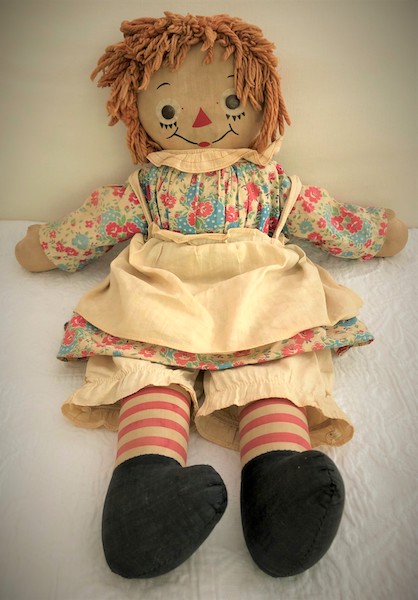
This spring, lifting out of the suspended animation of our pandemic year, I began to sift through the thousands of Kodachrome slides my father shot, over the course of his life (1915―1972), with his own father’s 1949, made-in-Japan, Nikon M. I still have that camera and some of its lenses: all came in beautifully tooled leather cases. (A solid brass tripod and its bespoke case were stolen in the 1970s.)
The slides have held up well. Their processing (all over the world, as my father traveled) is a tale in and of itself. A box or two that he shot in East Berlin, in the 1960s, on a solitary trip there, were all overexposed. I’ve turned up thus far only that one mysterious solo excursion: the rest of the images are of landscapes and sites I recall, and of our family. (Many, too many of the images are of me, from birth to age 19, the span of time I shared with my father and his camera.) At 69, this only child, the last of her Mohicans, is finally jettisoning most of the trove. The slides illustrate a narrative only I now remember.
It’s logical that I―oddly-mothered, uprooted (again and again), constantly re-nidifying—have held on with a vengeance to three of my mother’s dresses, my grandfather’s camera, my first doll (Raggedy Ann), and so many of the analog objects pictured in those slides dating from the 1950s, 60s, and 70s. Much of the furniture and china and silver, and almost all of the family-of-origin photographs and letters, and a lot of the jewelry, I have given away or passed down to cousins’ children (who often look at me in puzzlement when I present them, say, with the gold-dipped, ancient-coin buttons clipped from my father’s blazer).
As I say, the provenance of this idiosyncratic hoard of mine resides in my grey cells alone.
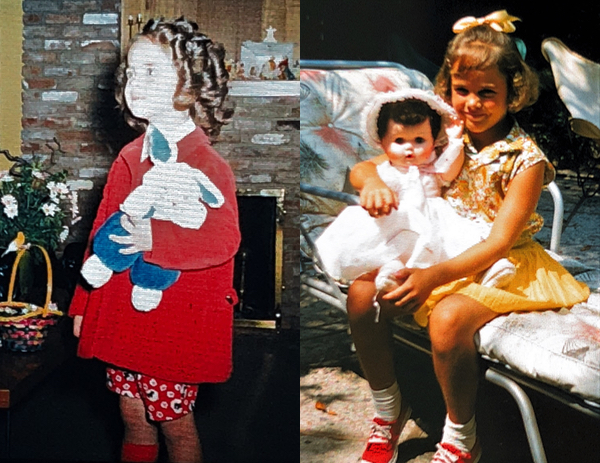
I was surrounded, as a toddler in my crib, by stuffed animals. My first transitional objects―and they are as real to me as early playmates—were a plush doll with a plastic face which was left atop a floor furnace vent in California where its features melted to a hideous blur. That defacement made no difference to me: “Baby” was treasured, if ghastly, till cleared out by my mother as we packed for Greece. A plush bunny, dropped in a storm drain, suffered similar disfigurement, but stayed in my bed as well till our abrupt departure. Raggedy Ann, washable, proved durable, and accompanies me still. A child’s pillow, and embroidered linen pillowcase, laundered again and again, traveled from Pasadena, to Athens, Greece, to Chicago. I doubt I am unique in preserving, in needing, urgently, a transitional object from infancy through adolescence, but my attachment to that pillow-talisman was passionate.
The earth shifted beneath my feet regularly: I held tight to a symbol of constancy that, finally, disintegrated in mid-1960s Illinois, where we came to rest for four years and I attended the 8th through 11th grades, temporarily rooted in one spot.
As I say, there was a zoo, at first: then, a gently used teddy bear and 1940s-vintage baby doll I inherited from donations to The Five Acres Children’s Home; a new Steiff hippo; a hand-me-down stuffed poodle (with a rattle in its tail). At some point—was I four, or five?—I saw, by chance, an oversized doll in a department store, and lobbied for its purchase. I was made to wait till Christmas for it but, by then, I had lost interest: it was, in fact, awful, and I was embarrassed ever to have wanted it.
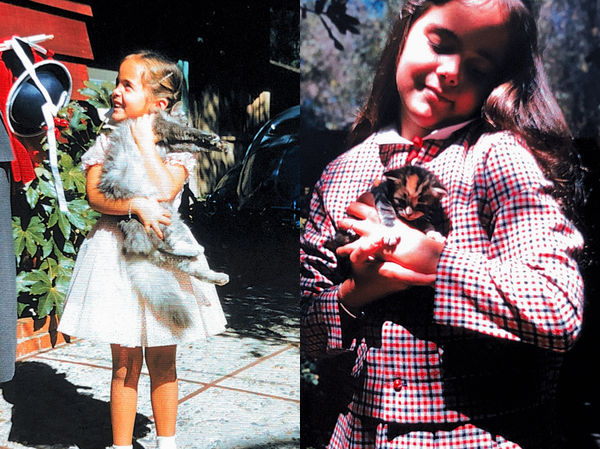
At some point, a Betsy Wetsy doll came my way along with a tiny, “working” toy oven. I recall being curious about the mechanics of the oven, the plumbing of the doll, but these toys held little interest for me. Perhaps, just like my mother, I lacked the mothering gene, which never fired within me until my late 30s, by which time it was too late. I cared for my cats, lovingly, but I would not be a little girl sliding into her mother’s heels: I decorated my entire face and the walls of my bedroom, at some point, early, with Chanel red lipstick, but I was more interested in books (first and foremost), other children, and animals.
The objects that comforted me were a damaged doll and bear and a lumpy pillow: they, all three, filled in for an absent or chilly maternal embrace, and they sufficed. So, this is what is lacking in even a tiny family, I must have “reasoned.” If I am to be alone—and perhaps being alone is the most real, most true and universal human state—then here is how I will deal with it. I could not sleep without my pillow. My sleep was broken by nightmares. In kindergarten, I began biting my nails. I was an anxious little creature from Day One. But I would figure something out. I would be accompanied, at first by mute, symbolic yet soft objects; and then, by God, I’d create a narrative, and place myself (and my glamorous parents) in it. I’d make sense of my life by writing it down and reading it back to myself as a bedside story.
In July of 1961, we set sail from New York aboard the S.S. Atlantic. In several steamer trunks, my mother had packed our clothes for an up to three-year stay in Greece. All my toys were given away or packed and put into storage. (One bear, one doll, one hippo would resurface, in 1964, in Chicago.) My pillow went with me.
![]()
At 40, Franz Kafka, who never married and had no children, while walking through a park in Berlin, met a little girl who was crying because she had lost her favorite doll. After she and Kafka searched for the doll unsuccessfully, the writer consoled the child by bringing her letters, purportedly written by the doll, recounting her exciting adventures around the world. Eventually, the story goes, Kafka brought the girl a new doll, passing it off as the original. Kafka died, and, years later, the girl, now a woman, found a note hidden inside the doll given to her by Kafka. It read: ‘Everything you love will probably be lost, but in the end, love will return in another way.’”―Kafka/Lost Doll Story
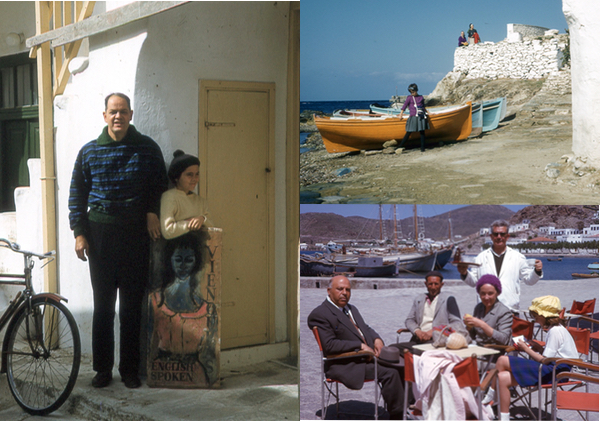
III. Kafkaesque Keepsakes
Along with sorting my father’s slides—some to digitize, some to send off to friends and the Benaki Museum, and most to discard—I have been documenting and preparing to give away, as a collection, the only objects I acquired, as a child, in Europe and the Middle East during the period we lived there in the early 1960s.
I believe it was my own idea to collect dolls—a doll from every country I visited—and I also believe it was I who insisted the dolls be made by hand. I have no idea why dolls appealed to me, given my history, nor why they had to be handmade, but here are those dolls, still, and I will soon be sending them off to a young cousin-by-marriage who teaches middle school students at a school founded by Muhammed Fethullah Gülen. (When I first met and got to know Gretchen, I immediately wanted her to have my dolls, but life intervened and the gift has been delayed. I hope to pack up the collection this June, however, and send them off, together, for their final journey.)
At the time of my father’s Fulbright, 15 years after World War Two (1939 to 1945), Northern Europe may have been bouncing back to life with brio, but Greece’s recovery was much slower. The Civil War in Greece “ended,” on paper, in 1949: when we disembarked in Piraeus in 1961, and made our way to Athens College, where my father enrolled in an orientation program before taking up his duties as a Fulbright Professor at Pierce College in Glyfada, the cold war between Left and Right in Greece still simmered beneath a surface artificially burnished to attract tourism and development.
My father, who had come to teach graduate social work and to research a book on post-Greek-Civil-War women (surely, my literate mother suggested that topic?), embarked on a listening tour accompanied by his charismatic wife and daughter. Approaching shattered, still volatile Greeks, raw from their war experiences, as a functioning, humble, family provided all of us with an “embodied letter of reference.”

We lived first in an apartment at the corner of Skoufa and Omirou streets in Athens’ Kolonaki district; then, on the second floor of a villa a few blocks outside Athens College’s gates in Psychiko. But we were most often out of Athens, traveling widely during the many school and national and religious holidays. I remember being in class some during the 6th and 7th grades, but all my summers, and for weeks during the winter and spring holidays, we were . . . elsewhere, traveling by car throughout a countryside still “off the grid,” as well as every country in Europe, the Middle East, and the Greek islands and Turkey. We spent much time visiting my father’s social work graduate students, all women, in their families’ homes as my father conducted research for a book he did not live to complete: “The Family in Post-War Greece.”
I know that my parents believed this opportunity—for all of us—would not come again. Europe still comprised a disparate constellation of distinct cultures with boldly defined borders and bristly checkpoints, and the Middle East and Turkey were not “safe” regions for Western travelers, but my father had old classmates in Cairo, Fulbright friends here and there, and contacts in Europe known to his Californian colleagues in the field of mental health. We spent much time on Patmos visiting a family supported during the war by my father’s friend, Dr. Carmer Hadley, of Los Angeles; we went to Holland to visit Jan and Tina, who had spirited out of Germany a Jewish child who became a San Francisco psychiatrist and close family friend, Dr. Kurt Loebl. In the 60s, quaintly, we arrived in Europe bearing analog, handwritten letters of introduction, and these letters opened door after door for us.
Patrick Leigh Fermor, whom I would later meet and edit in the 1980s, titled the first of his European memoirs “A Time of Gifts”: my sojourn as a child in 60s Europe was, for me, a time of rich gifts as well. Today, only one of the original three “Boleman-Herrings” is alive to remember that visit in detail, and what I have left to prove I was there are boxes and boxes of slides, and handmade dolls from a score of countries.
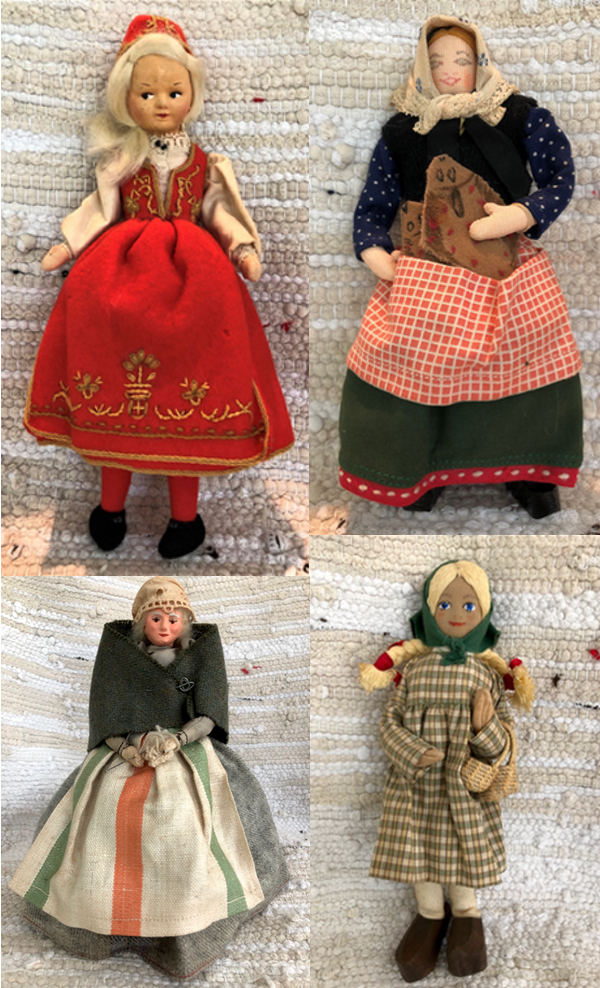
At the very end of this essay is a gallery of the dolls, now packed, with tags attached to their many feet, in a huge box to be dropped off at UPS and shipped to upper New York State. Like my father, I am preserving the analog in images—digital, these days—so that I can take comfort, still, in transitional if more æthereal objects, even as I let them go at last in their briefly embodied form. (As “Little Pillow” disintegrated, so one day will the dolls. So, one day sooner rather than later, will I.)
My favorites among the group came from Greece (two dolls made by young Greek women creating handicrafts for what used to be called The Queen’s Fund, now the National Welfare Organization/Ethnikos Organismos Pronias in Athens); Norway, Sweden, Denmark, and Scotland. Each is a compact work of sculptural art. All, I believe, would have been stitched and sewn and painted—and they have enchanting, distinctive faces—by women born before World War Two.
The Norwegian doll wears a beautiful embroidered and beaded red felt jumper, lace blouse, and cap. The Swedish doll wears carved wooden shoes and carries doll-sized woven baskets. The Danish doll is a fishwife, complete with an apron full of flounders. The Scottish doll is an old, old lace-capped woman in voluminous tweeds, her shawl scarf pinned by a tiny brooch: in her hands she carries knitting. Every dollmaker attended to the minutest details of the dolls’ clothing: lace bloomers, stitched leather or wooden shoes, and socks; their hair coiffed even beneath caps and scarves.

As a child, I knew that women had made these dolls for little girls, for little girls whose foreign mothers would pay for them. I knew, I was told, that this was one way in which women in Europe were making money to support their families. I never met any of the dollmakers. The dolls were purchased at small shops catering to tourists, but, when we were traveling in Europe as a family and, especially, in the Middle East, an American child was a rarity. I was met, everywhere I went, with surprise. Off-season, off the beaten track, here was a young, intact American family, traveling in a brand new VW beetle. In the Middle East, in my shorts, scuffed knees and finally-cropped hair, I was (of course) mistaken for a boy, and afforded special treatment as a result.
The two dolls most difficult to part with now are the Greek dolls. They portray the immediately recognizable, to Greeks, “Amalia,” a statuesque, blue-eyed blonde in the costume of Queen Amalia of Oldenburg, 1818—1875); and a brown-eyed, village girl from the provinces, dressed in a printed head scarf and carrying a traditional woven tagari.
These are “real” figures, in no way mass-produced. Each portrays a woman in full bloom, “presented” as her countrywomen saw themselves: confident, elegant, and rooted in shared cultural history. Each is an avatar of what the dollmakers saw as representative of Greek women at their particular moment in history. Each has gravitas and dignity
I had come a very long way, and very quickly, from Raggedy Ann, possessed by thousands, and Betsy Wetsy, mass-marketed to little American homemakers of the 1950s. I looked into the faces of my new dolls and saw myriad ways of being a girl and a woman elsewhere in the world, elsewhere in time. These were transitional but not comfort objects; to be studied, pondered, but not clung to. I had learned so, so much, so rapidly. I still had miles to go before I slept.
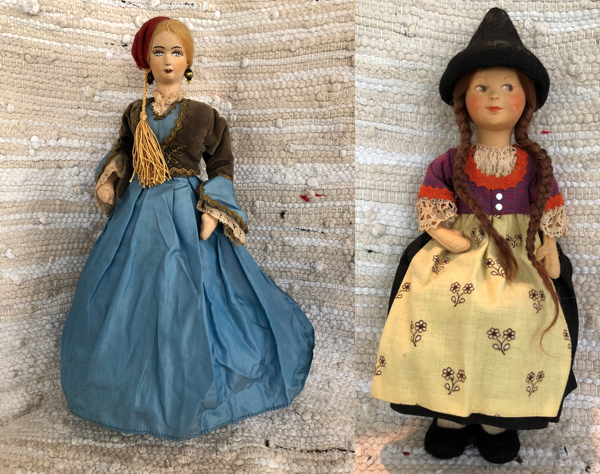
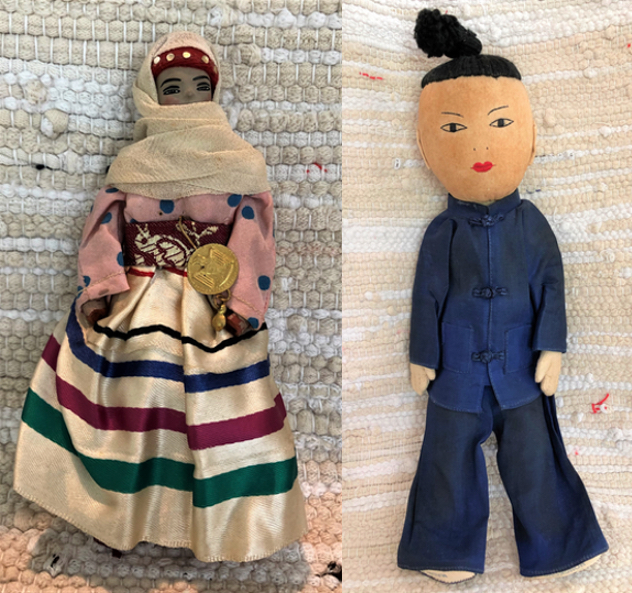
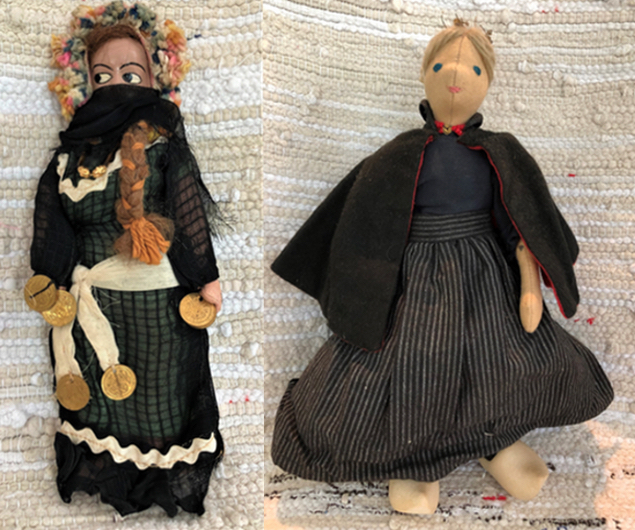
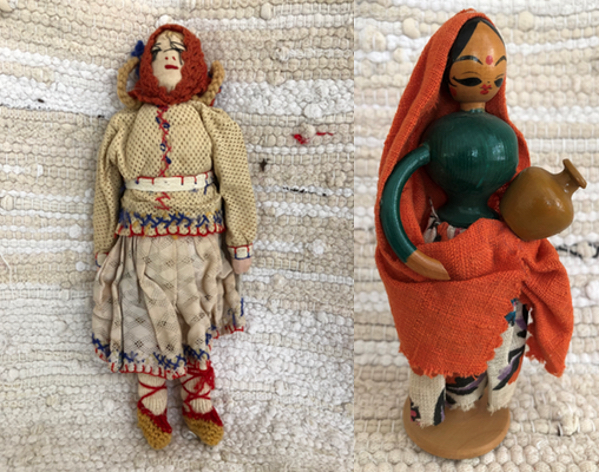
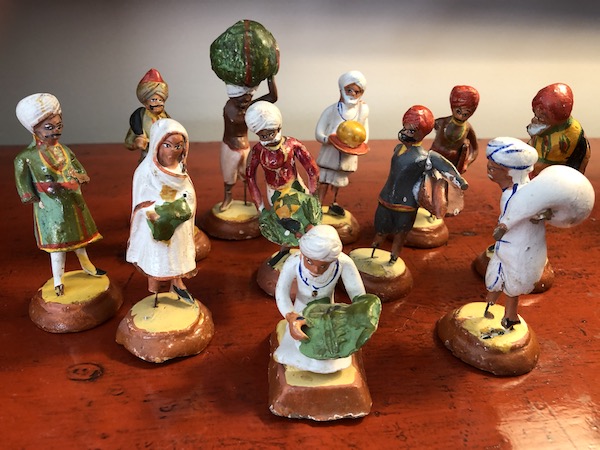
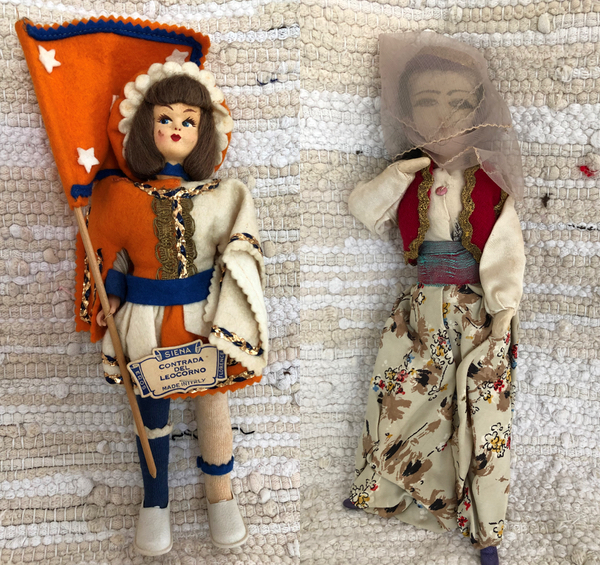
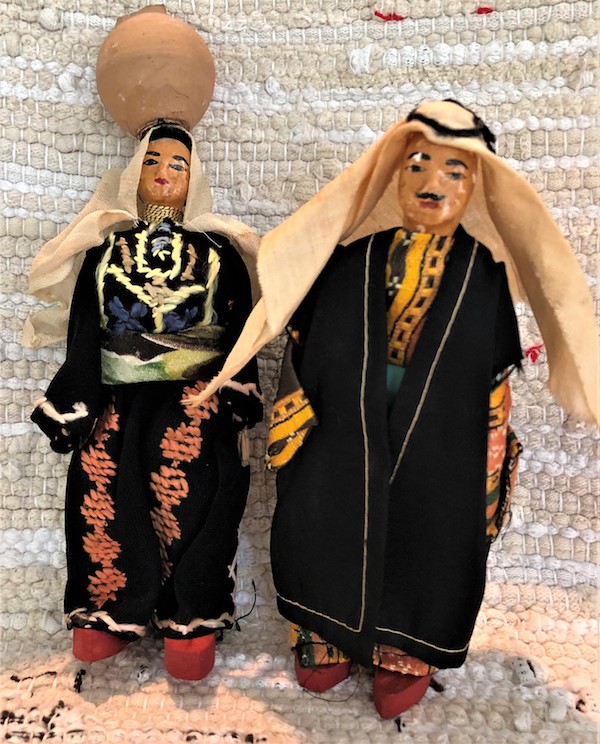
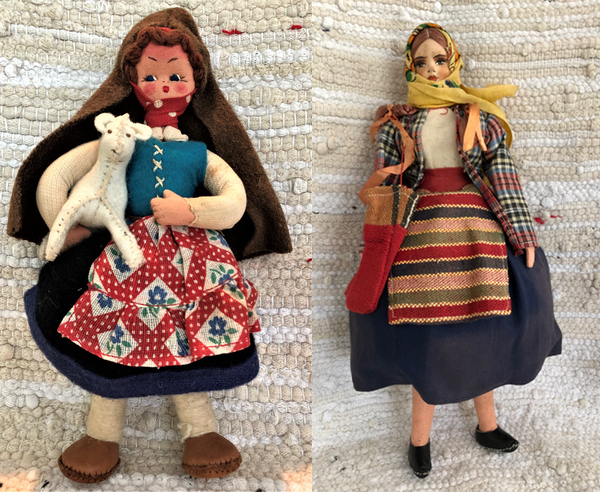
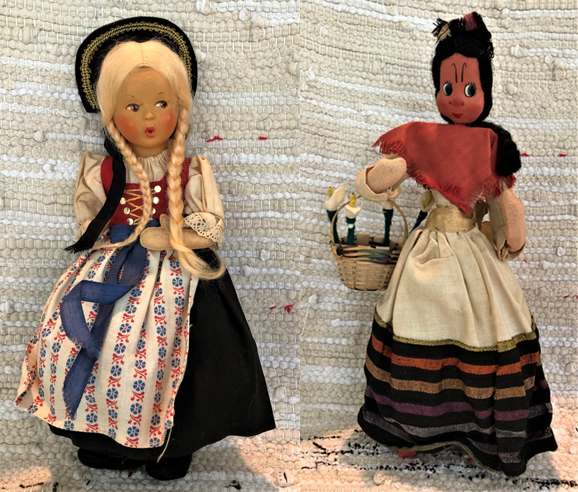
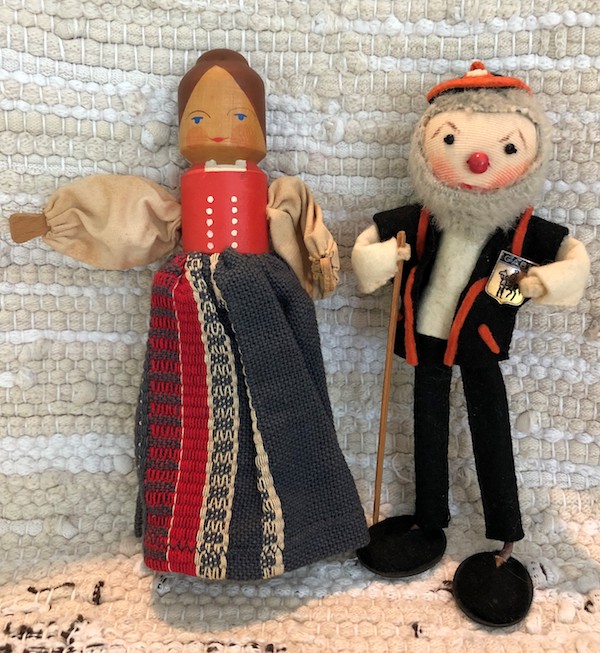
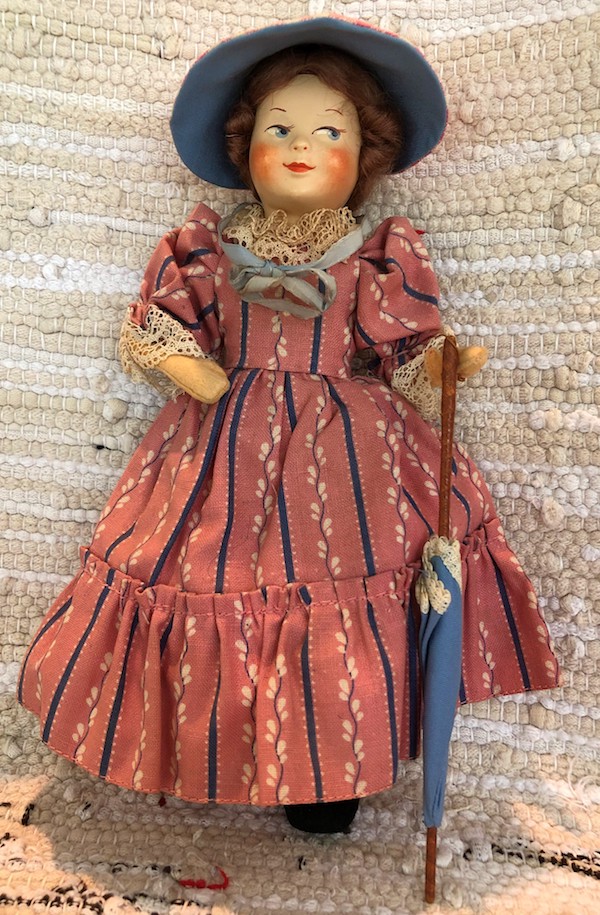
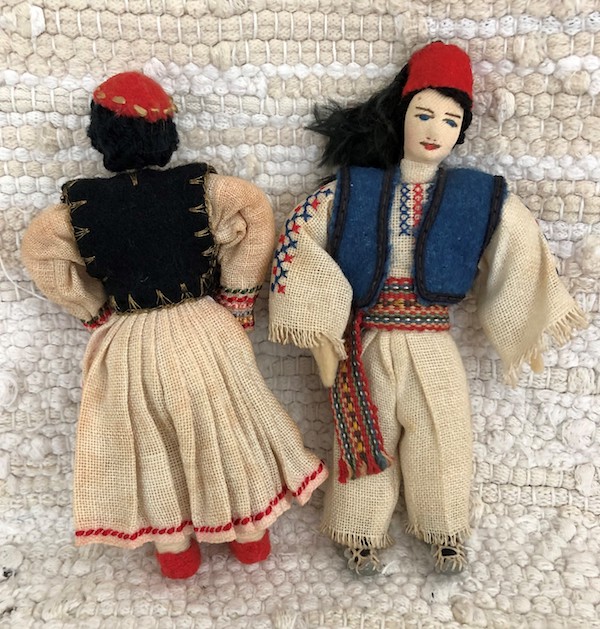
![]()
To order Elizabeth Boleman-Herring’s memoir and/or her erotic novel, click on the book covers below:

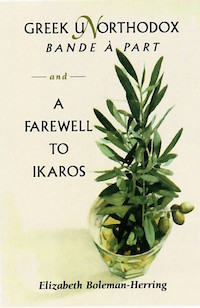
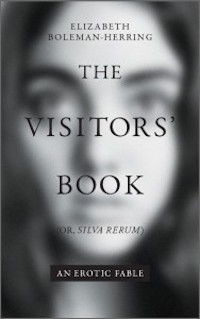
6 Comments
Skip Eisiminger
What a doll you became and remain.
Skip
Edee Fenimore
Thank you for the opportunity to read the “rough draft “ of your memoir. It drew me in immediately; for me, the requirement of a good story.
Elizabeth Boleman-Herring
Edee, thank you! NOW, comes the hard part” chapters 2 through 70! xoxoxoxo
Elizabeth Boleman-Herring
Skip, I’m still somewhere between Betsy Wetsy and Raggedy Ann! Thank you, My Old Friend!
Kristine McClanahan
As one of those children of majors and colonels that you knew in Greece, I must comment on your categorization of your classmates. My family and the army families lived in Greek houses in Greek neighborhoods. We interacted with our neighbors and went to visit all of the Greek ruins and museums. We took cruises to visit the beautiful Greek islands. Yes we had the post exchange, but I have no memory of owning a sweatshirt until we were back in the USA. My mother sewed our clothes and we had to get on a list to get pasteurized milk that my dad flew in from Thessaloniki. There was none at the px.
Elizabeth Boleman-Herring
Agapitemou Kristine . . . yes, but WHEN were you in Greece? Paizei megalo rolo: the Kristine Bergeron I knew, and the Sharon Stone, lived in posh neighborhoods and shopped exclusively at the PX, for milk and all else. This was 1960/1/2/3…..